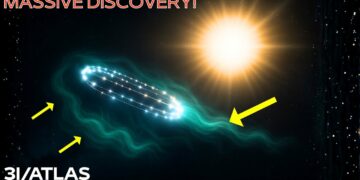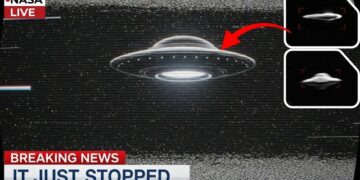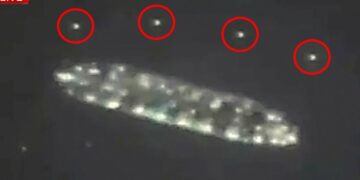The moon is no longer just a barren rock in space. China’s recent missions to its far side have revealed unsettling discoveries: materials and structures unlike anything seen before, challenging our understanding of lunar geology. What do these findings mean for humanity? Let’s explore China’s groundbreaking lunar exploration program and its profound implications.
China’s Lunar Exploration Program
While NASA focuses on Mars and telescopes, China has quietly built the most ambitious lunar program since Apollo. The Chang’e missions, named after the Chinese moon goddess, have progressed methodically. Chang’e 1 and 2 mapped the lunar surface in unprecedented detail. Chang’e 3 landed on the near side in 2013, the first lunar landing since 1976. Chang’e 4 achieved a historic first in 2019 by landing on the moon’s far side—a feat no other nation has accomplished. This was no simple task; the moon blocks direct communication with Earth, so China deployed a relay satellite at a gravitational point beyond the moon to enable the Yutu-2 rover to explore the von Kármán crater in the massive South Pole-Aitken Basin. Operating for over five years, far beyond its three-month plan, Yutu-2 continues to send data that’s rewriting lunar science.
Chang’e 5, in 2020, returned the first lunar samples since the 1970s, targeting younger volcanic regions for a new perspective on the moon’s history. In 2024, Chang’e 6 made history again by returning samples from the far side. Early analysis reveals materials fundamentally different from Apollo samples, hinting at unknown geological processes. China’s methodical approach—each mission building on the last—aims for a permanent International Lunar Research Station by 2035. Unlike NASA’s delayed Artemis program, China’s lunar strategy is advancing with precision.
The Gel-Like Substance
In 2019, Yutu-2 spotted a bizarre, shiny, gel-like substance in a small far-side crater. Its greenish tint and unusual luster stood out against the lunar dust. Initially, scientists thought it might be melted glass from a meteor impact or volcanic material. After analysis with the rover’s spectrometers, it was identified as impact melt breccia—a glassy substance formed when a meteor’s heat fuses lunar soil. However, this 20×6-inch patch showed properties suggesting recent or complex melting processes, unexpected on the far side’s thick crust, which lacks heat-producing radioactive elements. Why does it appear fresher than its surroundings? What caused this formation? These questions hint at active processes on the far side, challenging our understanding of lunar geology.
Mysterious Glass Spheres
Yutu-2’s next find was even stranger: translucent glass spheres, half an inch to an inch in diameter, scattered across the far side. Unlike the tiny beads found by Apollo, these were larger and clearer, unseen before on the moon. Theories suggest they formed from meteor impacts melting anorthosite rock into spheres or from ancient volcanic “fire fountains.” Their size, clarity, and geometric arrangement defy current models of lunar geology. The energy needed to create such large, pure spheres is immense, and their distribution suggests an unidentified process or structure beneath the surface. These orbs, untouched for billions of years, may hold clues to unknown lunar dynamics.
South Pole-Aitken Basin and Mantle Materials
The Chang’e 4 and 6 missions targeted the South Pole-Aitken Basin, a 1,600-mile-wide crater formed over 4 billion years ago by a massive asteroid impact. This impact likely punched through the moon’s crust, exposing the mantle beneath. Chang’e 4 detected significant amounts of low-calcium pyroxene and olivine—minerals characteristic of the mantle—in proportions suggesting deep lunar origins. Chang’e 6’s 2024 samples confirmed these findings, providing the first direct evidence of mantle materials on the moon. Unlike Apollo’s near-side samples, these reveal the moon’s primordial history. However, their composition doesn’t match expected models, suggesting either flawed theories of lunar formation or unknown processes altering these materials.
Evidence of Volcanism
Chang’e missions used ground-penetrating radar, revealing stacked layers of volcanic basalt beneath von Kármán Crater—evidence of repeated ancient lava flows. These layers, thicker at deeper levels, indicate prolonged volcanic activity, unexpected on the far side, where the thick crust and lack of radioactive heat sources should have halted volcanism early. What powered these eruptions? Some propose the South Pole-Aitken impact created fractures reaching the core, allowing magma to surface. Others suggest hidden radioactive pockets. These findings challenge the idea of a geologically dead far side.
Changesite-(Y): A New Mineral
In 2022, Chang’e 5 samples revealed a new mineral, changesite-(Y), a phosphate crystal just 10 microns wide, formed under extreme conditions from a meteor impact. It’s only the sixth new lunar mineral ever found, making China the third nation to identify one. Notably, it contains helium-3, a rare isotope with potential for clean nuclear fusion. Found in young, 2-billion-year-old basalts, changesite-(Y) suggests such minerals may be common in unexplored regions, with strategic implications for future energy.
Helium-3: The Energy of the Future
Helium-3, embedded in lunar soil by solar wind, could power fusion reactors with minimal waste. Chang’e 5 confirmed significant extractable quantities, potentially over a million tons across the moon. Just one ton could outproduce 10 million tons of coal. However, extracting it requires processing vast amounts of soil—150 tons per gram—demanding permanent lunar infrastructure. China’s aggressive lunar program positions it to lead in this resource race, with helium-3 valued at thousands of dollars per gram.
Water on the Moon
Chang’e 5 shattered the belief that the moon is dry, detecting up to 120 parts per million of water in sunlit soil and 180 in a specific rock. Tiny glass beads in the samples, formed by micrometeoroid impacts, contain up to 2,000 parts per million of water, chemically bound within. These beads, abundant across the lunar surface, could hold billions of tons of water, accessible at all latitudes. This transforms prospects for lunar bases, providing water for drinking, fuel, and life support, reducing reliance on polar ice.
The Strategic Race for Lunar Resources
These discoveries are fueling a second space race. NASA’s Bill Nelson admitted in 2024 that the U.S. is in a race with China for water-rich lunar regions, expressing concerns about China claiming territory, likening it to their South China Sea actions. China’s International Lunar Research Station, planned for 2035, includes power generation and resource extraction. Chang’e 7 and 8 will explore polar ice and test resource utilization. Unlike NASA’s delayed Artemis, China’s program is systematic, mapping resources and preparing for industrial operations. Controlling lunar water and helium-3 could dictate space exploration and energy futures.
What Apollo Missed
Apollo’s six landings (1969–1972) explored only the near side’s equatorial regions, collecting 842 pounds of similar samples. They missed the far side, polar regions, and highlands. Chang’e 4, 5, and 6 explored the far side, young volcanic areas, and the South Pole-Aitken Basin, revealing stark differences: the near side has thin crust and lava plains, while the far side has thick, cratered highlands with less radioactive material. These missions are solving the mystery of the moon’s asymmetrical evolution.
A New Lunar Future
China’s discoveries—gel-like substances, glass spheres, mantle materials, water, and helium-3—are redefining the moon as a resource-rich world. Helium-3 could solve Earth’s energy crisis, water enables sustainable bases, and mantle materials offer insights into the early solar system. The moon is now a strategic platform. China’s methodical Chang’e program, leading with historic firsts, is outpacing NASA. As the International Lunar Research Station takes shape, the nation that dominates the moon may shape humanity’s future among the stars.
What do you think of these lunar revelations? Share your thoughts below and subscribe for more cosmic updates.























